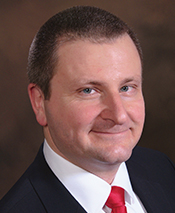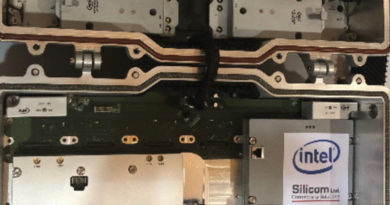Flexible MAC Architecture
By David Claussen
Have it your way
Flexible MAC architecture (FMA) is a nascent specification describing distributed access architecture (DAA) systems. The FMA specification intends to provide a unified model for operators desiring to go beyond the limitations of centralized access architecture (CAA). CAA can be considered a shorthand for traditional CMTS/CCAP systems as widely deployed at the time of this writing. The FMA specification is structured to accommodate traditional remote PHY (R-PHY), remote MACPHY (R-MACPHY) system architectures, and flexibly (hence the name) accommodate DAA variant architectures ranging from pure R-PHY architectures to pure remote CMTS architectures, though R-PHY and R-MACPHY system variants are expected to be the most deployed FMA system types.
Where FMA materially departs from the traditional DAA is the integration of software defined networking (SDN) and network function virtualization (NFV) into the specification, as well as the ability to flexibly accommodate other access technologies including xPON and 4G/5G wireless.
This all sounds well and good, but what does FMA mean, in a practical sense, to the operator?
First, I’ll address the rationale behind DAA, then deconstruct FMA, examine the effects of SDN/NFV, and wrap-up with some of the possibilities that FMA offers to the industry.
Why DAA?
Cable operators and OEMs have created an ecosystem offering broadband services on specialized integrated CMTS/CCAP platforms to provide high-speed data (HSD), QAM-based video, and PacketCable-based voice services. These systems use analog transmission and combining technologies for both the fiber-optic and coaxial portions of the access network. These analog transport systems have served the industry well, but increasing bandwidth demands have revealed that analog transport has reached its practical limit, both in capacity and practical functionality. To improve both reach and utilization of existing and new fiber assets, a switch to digital modulation and combining techniques allows for an improvement in end-of-line (EOL) RxMER, resulting in higher service group (SG) capacities from the higher modulation orders that can be supported by eliminating the analog effects on the fiber portion of the network from the SG loss-budget by generating the QAM signal at the output of the MAC-network endpoint (MAC-NE), rather than at the hub site. The second positive side-effect of digital modulation on the fiber is the ability to increase the wavelength loading of the fiber from 16 wavelengths to 40 or even 80 wavelengths, depending on endpoint equipment. This provides a substantial amount of capacity to fiber assets. An additional positive side-effect of the elimination of analog combining and up/down-converting equipment frees up a substantial amount of space/power/cooling capacity from the typical hub site. While power augmentation to the outside plant is necessary to support DAA, a substantial net savings is still realized.
Deconstructing FMA
A modern traditional integrated CMTS/CCAP is the physical manifestation of over two decades of industry experience. It stands to reason that deconstructing one is not without a degree of complexity. In order to retain the functionality of a CMTS while distributing its functionality requires a few new network entities to share the workload.
MAC-NE
This is the generic term for what has been heretofore known as either a remote PHY device (RPD) or remote MAC device (RMD). The MAC-NE physically resides in the outside plant in a node housing. These devices utilize Ethernet signaling over their northbound interfaces to connect with the rest of the operator’s network. For a DOCSIS deployment, the MAC-NE will contain the QAM generators/receivers, and depending on whether it operates as a RMD or RPD, a varying amount of the DOCSIS control and management planes, L2 and L3 control and data planes, and DOCSIS scheduler.
MAC manager (MM)
The MAC manager serves as logical and programmatic adapter to the rest of the hub site systems (video/PacketCable/back office). The MAC manager also serves as a collector for configuration, state, logging, and streaming telemetry.
The MAC manager’s northbound interface as defined in the FMA-OSSI specification implements all defined OSSI management interfaces. These are expected to include SNMP sets, gets, traps, and notifications. Syslog and IPDR are also included. Other legacy interfaces may be implemented to suit an operator’s requirements. NETCONF is specified as an optional northbound configuration management interface. The specified southbound interface between the MAC-NE and the MM is based on RESTCONF and YANG.
PacketCable aggregator (PAG)
Like the MAC manager, the PAG as defined in the FMA-PAI specification serves as a programmatic adapter to the FMA system(s) it serves to allow the It allows the FMA system(s) to appear as a single functional unit to the call management server (CMS), policy server, and record keeping server (RKS). Additionally, it serves as a fan-in point for a large number of MAC-NEs.
Converged interconnect network (CIN)
The CIN provides connectivity between the MAC-NE and the core components of the operator network. It comprises a secure leaf (S-Leaf) or leaf switch, and may include a spine switch that interconnects a number of leaf switches to scale aggregation. The CIN can provide L2 or L3 aggregation services, depending on the operator’s specific requirements.
Precision timing protocol (PTP) system
The PTP system is used to distribute timing signals from core PTP/GPS/GNSS timing sources to provide timing information for video services as well as to provide a source for the DOCSIS timing interface (DTI) services that can be used to support mobile-xHaul (MxH) services supporting small-cells over the DOCSIS infrastructure.
Examining SDN and NFV
FMA is designed to enable SDN and headend/hub NFV. By way of the MAC manager, FMA supports a variety of well-known legacy management and data collection protocols to minimize the transition impact of FMA adoption. In addition to existing protocols, the FMA-OSSI specification provides support for NETCONF as an optional configuration interface.
The FMA-MMI specification defines RESTCONF, TLS, and YANG as part of the southbound interface between the MAC manager and the MAC-NE. The FMA-YANG specification provides definitions of the data models use by the MAC management interface (MMI).
With respect to NFV, early implementations of DAA and FMA have varying degrees of support for a Kubernetes-style micro-service system architecture. Over time, a maturation of the FMA specification set is expected to provide more defined specifications regarding software components, to provide a more well-defined requirement for the wider FMA ecosystem.
As NETCONF, TLS, RESTCONF, and YANG replace existing management protocols, the true value of SDN and NFV can be realized. FMA lays the foundation to realize the promise of SDN and NFV.
Opportunities
The adoption of FMA, and R-MACPHY in particular provides substantial resource and space savings in existing edge facilities. While the costs related to these assets are not to be discounted, having facilities in close physical proximity and therefore close temporal proximity to the end-users provide cable operators with the opportunity to offer services with unparalleled latency and jitter characteristics to match the well-known throughput capabilities available via HFC access architectures. These services will be difficult, if not practically impossible, for other players in the data and entertainment distribution services industries to compete against a well-executed FMA solution. As FMA matures, and NFV achieves its potential with improved edge-compute, the options are expansive.
Conclusion
FMA is a natural evolution of the existing DOCSIS infrastructures, with considerations to have new systems coexist with current systems. While not without a learning curve, FMA offers performance and flexibility to cable operators largely unavailable today. As FMA’s full promise is realized, adopters of FMA technology may capitalize on its features to provide virtually matchless services.


David Claussen,
Charter Communications, Inc.
david.claussen@charter.com
David Claussen is a Principal Engineer in the Access Architecture Engineering Team in Englewood, Colorado. David is the Lead Architect for distributed access architecture and engineering effort at Charter. Creator of and impetus behind the Generic Access Platform (GAP) Standard, David has a background in embedded software engineering, and has held several engineering and architecture roles in the cable industry since 2000. David holds a Bachelor of Science degree in Electrical Engineering, and a M.B.A in Finance.


